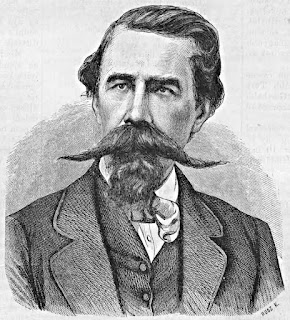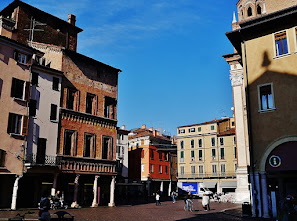Fabio Cannavaro - World Cup winner
Defender captained Azzurri to 2006 triumph
The footballer and coach Fabio Cannavaro, who was captain of the Italy team that won the 2006 World Cup in Germany, was born on this day in 1973 in Naples. In a hugely successful playing career, the central defender was part of the excellent Parma team that won the UEFA Cup and the Coppa Italia under coach Alberto Malesani in the late 1990s, winning another Coppa Italia in 2002 with Pietro Carmignani in charge. But his biggest glories were to come after he left Italy for Spain to play for Real Madrid under the Italian coach Fabio Capello, winning the La Liga title twice in 2006 and 2007. His 136 appearances for the Azzurri made him the most capped outfield player in the history of the Italian national team (only goalkeeper Gianluigi Buffon has more caps in total) and the feat of winning La Liga and the World Cup in the same year helped him win the coveted Ballon d’Or, awarded annually by the magazine France Football to the player judged to be the best in Europe. He is only the third defender to be given the award, joining the company of Franz Beckenbauer and Matthias Sammer. Read more…
______________________________________
Andrea Mantegna – artist
Genius led the way with his use of perspective
The painter Andrea Mantegna died on this day in 1506 in Mantua. He had become famous for his religious paintings, such as St Sebastian, which is now in the Louvre in Paris, and The Agony in the Garden, which is now in the National Gallery in London. But his frescoes for the Bridal Chamber (Camera degli Sposi) at the Palazzo Ducale in Mantua - Mantova in Italian - were to influence many artists who followed him because of his innovative use of perspective. Mantegna studied Roman antiquities for inspiration and was also an eminent engraver. He was born near Padua - Padova - in about 1431 and apprenticed by the age of 11 to the painter, Francesco Squarcione, who had a fascination for ancient art and encouraged him to study fragments of Roman sculptures. Mantegna was one of a large group of painters entrusted with decorating the Ovetari Chapel in the Church of the Eremitani in Padua. Much of his work was lost when the Allied forces bombed Padua in 1944, but other early work by Mantegna can be seen in the Basilica of Sant’Antonio and in the Church of Santa Giustina in Padua. The artist later came under the influence of Jacopo Bellini, the father of Giovanni and Gentile Bellini. Read more…
________________________________________
Girolamo Frescobaldi – composer
Organist was a ‘father of Italian music’
Girolamo Alessandro Frescobaldi, one of the first great masters of organ composition, was born on this day in 1583 in Ferrara. Frescobaldi is famous for his instrumental works, many of which are compositions for the keyboard, but his canzone are of historical importance for the part they played in the development of pieces for small instrumental ensembles and he was to have a strong influence on the German Baroque school. Frescobaldi began his career as organist at the church of Santa Maria in Trastevere in Rome in 1607. He travelled to the Netherlands the same year and published his first work, a book of madrigals, in Antwerp. In 1608 he became the organist at St Peter’s Basilica in Rome and, except for a few years when he was court organist in Florence, he worked at St Peter’s until his death. He married Orsola Travaglini in 1613 and they had five children. Frescobaldi published 12 fantasie that are notable for their contrapuntal mastery. In a collection of music published in 1626 he provides valuable information about performing his work. He writes in the preface: ‘Should the player find it tedious to play a piece right through he may choose such sections as he pleases provided only that he ends in the main key.’ Read more…
___________________________________
Saverio Bettinelli – writer
Jesuit scholar and poet was unimpressed with Dante
Poet and literary critic Saverio Bettinelli, who had the temerity to criticise Dante in his writing, died at the age of 90 on this day in 1808 in Mantua. Bettinelli had entered the Jesuit Order at the age of 20 and went on to become known as a dramatist, poet and literary critic, who also taught Rhetoric in various Italian cities. In 1758 he travelled through Italy and Germany and met the French writers Voltaire and Rousseau. Bettinelli taught literature from 1739 to 1744 at Brescia, where he formed an academy with other scholars. He became a professor of Rhetoric in Venice and was made superintendent of the College of Nobles at Parma in 1751, where he was in charge of the study of poetry and history and theatrical entertainment. After travelling to Germany, Strasbourg and Nancy, he returned to Italy, taking with him two young relatives of the Prince of Hohenlohe, who had entrusted him with their education. He took the eldest of his pupils with him to France, where he wrote his famous Lettere dieci di Virgilio agli Arcadi, which were published in Venice. He also wrote a collection of poems, Versi sciolti, and some tragedies for the Jesuit theatre. Read more…

.jpg)
,_engraving_by_Claude_Mellan_(1619).jpg)


.jpg)

.jpg)

.jpg)
.jpg)
%20(1).jpg)



.jpg)
.jpg)




.jpg)
.jpg)




.jpg)